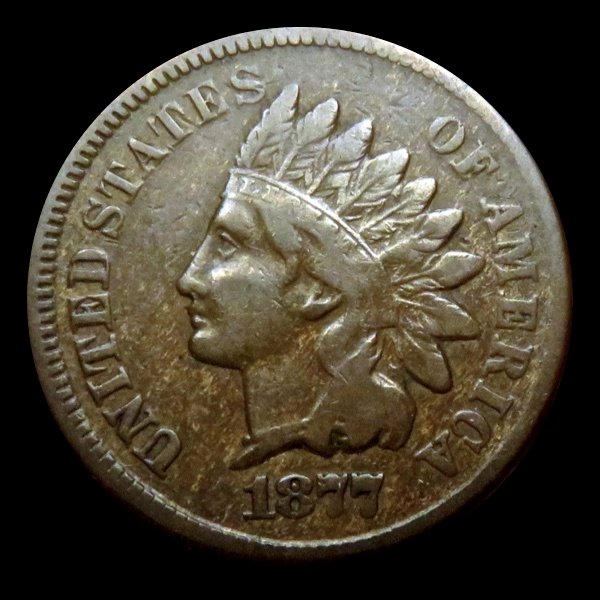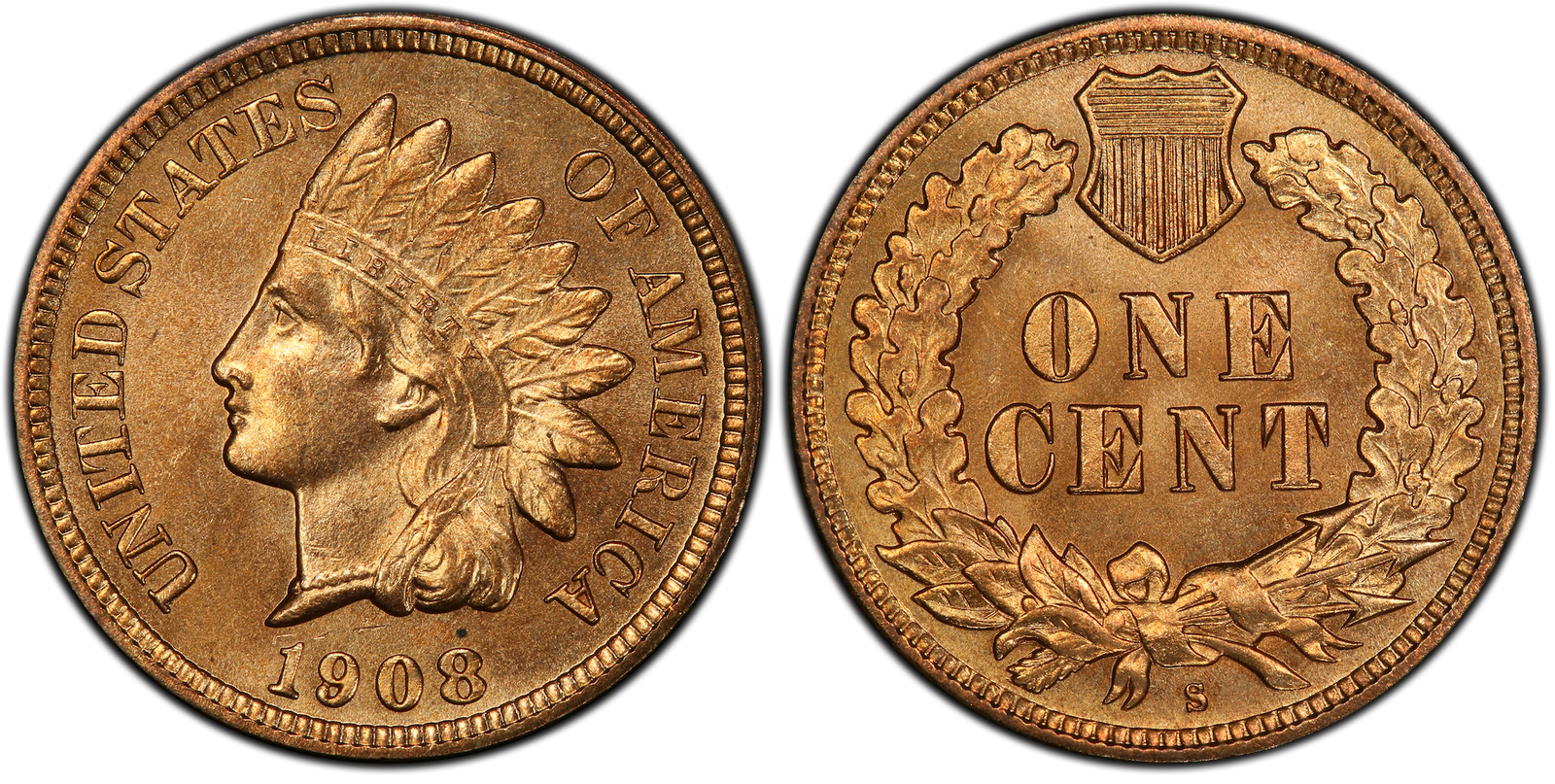
The true heir to the early American copper Large cent is the Indian Head cent. Briefly preceding the series, the short-lived set of Flying Eagle cents minted during 1857 and 1858 was plagued by problems, both during the actual minting process and in the unevenly struck specimens often produced. It was with the Indian Head cent that America became accustomed to a small-sized coin of a copper alloy. The Civil War, starting soon after the first Indian Head cents began circulating, was an early test. After surviving the shortage of small change during the war years, Indian Head cents would soon represent an integral unit of commerce during the rest of the nineteenth century. A customer could have purchased a slew of items with just a few cents. During the year 1909, the Lincoln cent would replace this series that ran for half a century.
The first Indian Head cents were of a different composition than later issues. Coins minted between the years 1859 and part of 1864 were composed of eighty-eight percent copper and twelve percent nickel. Later coins minted in 1864 through those minted until 1909 consisted of ninety-five percent copper and five percent tin and zinc. Both issues had a diameter of three-quarters of an inch, but the first nickel-alloy Indian Head cents were thicker and heavier, weighing 4.67 grams instead of 3.11 grams.
The key date in the Indian Head cent series is undoubtedly the 1877 issue, already considered rare while these coins were still circulating in the early twentieth century. Low-grade or damaged pieces are available to some extent, but attractive examples of higher quality are difficult to obtain. The 1909-S Indian is a low mintage date commanding substantial premiums, though it remains secondary to the 1877 in terms of value and desirability. Some post-Civil War dates, particularly 1869 through 1872, produced coins that are considered semi-keys. Several popular varieties are noted for this series. The 1869/69 had formally been considered the most significant, even earning its own spot in most popular coin albums. More recently, it has just been considered a desirable repunched date and one of several designated as a major variety; others include the 1867/67 and the 1894/94. The 1867/67 is the most dramatic of the three. The 1864-L is usually collected as part of the regular date-mint series and is not considered a variety at all.
Every date from 1879 through the end of the series, save for the S-minted pieces, is easily obtainable in circulated condition. Many earlier coins, including the semi-key dates, are challenging in higher grades, yet reasonably easy to collect in well-circulated conditions. It is not uncommon to find collections for sale lacking only the 1877 and 1909-S. Strike is not generally an issue with this series. Though weakly struck examples are sometimes encountered, no particular date is consistently poor, warranting special attention. 1909-S (curiously, not 1877) is the only date for which inauthentic coins appear regularly.
